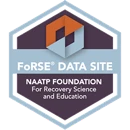May 12, 2025
7-Hydroxymitragynine: Understanding the Potent Opioid Compound in Kratom

When exploring the complex issues surrounding kratom, a substance often marketed as natural and harmless, one key compound frequently emerges in discussions: 7-hydroxymitragynine. Understanding exactly what this compound is, how it works, and its risks—including addiction and withdrawal—is crucial for anyone considering quitting kratom or concerned about its effects.
What is 7-Hydroxymitragynine?
Kratom (Mitragyna speciosa), a plant native to Southeast Asia, contains a variety of alkaloids—chemical compounds with significant effects on the human body. Among the most potent and concerning of these alkaloids is 7-hydroxymitragynine, an active compound recognized for its powerful opioid-like properties.
While the primary alkaloid found in kratom leaves is mitragynine, 7-hydroxymitragynine is far more potent, binding directly to the opioid receptors in the brain with much greater intensity (American Addiction Centers). This binding activity produces effects similar to opioids, including pain relief, sedation, and euphoria, but also creates a significant risk for dependence and addiction.
How Does 7-Hydroxymitragynine Work?
When ingested, 7-hydroxymitragynine rapidly attaches to the brain’s opioid receptors, particularly the mu-opioid receptor, the same receptor targeted by narcotics such as morphine, heroin, and fentanyl (NIDA). Once activated, these receptors produce various opioid-like effects, ranging from mild relaxation to intense euphoria and sedation.
However, this powerful interaction with opioid receptors is exactly what makes kratom—and specifically 7-hydroxymitragynine—so problematic. With repeated use, the brain adapts, requiring higher doses to achieve the same effects, thereby fostering tolerance, dependence, and ultimately, addiction.
Effects and Dangers of 7-Hydroxymitragynine
One of the biggest misconceptions about kratom is that it is safer or less addictive than traditional opioids. However, because of the potency of 7-hydroxymitragynine, kratom can lead to serious opioid addiction issues. People who start taking kratom casually, believing it to be a safe herbal remedy, often find themselves unexpectedly dependent on this powerful compound.
Common effects attributed to 7-hydroxymitragynine and kratom in general include:
- Pain relief
- Feelings of euphoria
- Sedation or relaxation
- Nausea and dizziness
- Respiratory depression in higher doses (a dangerous effect shared with traditional opioids) (FDA).
Despite claims that kratom is a "natural" product, the health risks, especially from 7-hydroxymitragynine, are substantial. In fact, the FDA explicitly warns about these opioid-like dangers, strongly discouraging its use due to potential addiction and overdose (FDA).
Is 7-Hydroxymitragynine Addictive?
Absolutely. Due to its strong opioid-like action, 7-hydroxymitragynine can cause significant physical and psychological dependence. Regular users of kratom often describe symptoms typical of opioid addiction, including cravings, compulsive use despite harmful consequences, and severe withdrawal symptoms when they try to stop.
Studies have also identified that 7-hydroxymitragynine’s potency is greater than morphine in animal models, underscoring the potential severity of its addictive profile (Science Direct).
Recognizing Kratom Withdrawal Symptoms
Withdrawal from kratom, particularly due to its opioid compounds like 7-hydroxymitragynine, can mirror classic opioid withdrawal. Users quitting kratom often experience:
- Muscle pain and cramps
- Severe anxiety and restlessness
- Insomnia
- Intense cravings
- Gastrointestinal distress, including nausea and diarrhea
These withdrawal symptoms can be challenging to manage alone and may require professional assistance or an outpatient program to navigate safely and comfortably.
Kratom vs. Traditional Opioids: Understanding the Similarities and Risks
Given its opioid-like characteristics, some might wonder if kratom itself is classified as a narcotic. Technically, kratom is not federally regulated as a narcotic in the U.S., but its effects on the brain closely parallel narcotics due to compounds like 7-hydroxymitragynine. This similarity places users at risk for addiction and the need for professional intervention.
Quitting Kratom: Professional Support for Recovery
Recognizing the risks associated with 7-hydroxymitragynine can be the first step toward recovery. Outpatient treatment programs, such as Dilworth Center's Intensive Outpatient Program in Charlotte, NC, can provide comprehensive and structured support designed specifically to help individuals overcome kratom addiction. With 35 years of experience, Dilworth Center offers evidence-based approaches, a highly skilled and tenured staff, and substantial family involvement to ensure lasting recovery.
Final Thoughts: Understanding to Overcome
By clearly understanding the potent opioid compound 7-hydroxymitragynine and its risks, individuals can approach quitting kratom with a deeper awareness and preparedness. Knowledge empowers recovery, especially when it leads people toward supportive treatments that foster long-term sobriety and a healthier life.








